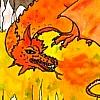Geoshell- how do I use them?
 cherpenbeck
Posts: 1,413
cherpenbeck
Posts: 1,413
With Daz we are able to make and use geoshells. So far I have succeeded in creating a geoshell, but not in applying material or things like pictures (for a tatoo). Shaders seem to add something, but it never looks like the material I try (chainmail), I just get a different color.
And I can't find a tutorial. How do I apply shaders, materials or little pictures to a geoshell?


Comments
As with anything, select the Geometry Shell, select the target surfaces if using a Shader Preset rather than a Materials Preset, and double-click the preset - or select the target surface in the Surfaces pane and sue the Editor tab to adjust settings. The only wrinkle I can think of is that Iray doesn't like coincident surfaces even if they are masked, so adjust the Push Modifier osffset value slightly if using mutliple shells at once. Also, remember that procedural shaders won't show until you render and won't usually work in both Iray and 3Delight.
The offset doesn't have to be very much of one, but it is best to be slightly more than any displacement.
Okay, the last answer I understand. Then the virtual tattoo would be fixed on a spot of said skin layer. In that case I could as well draw it directly on the copy of the skin and exchange the picture, right? No need of the geoshell.
Now there is this Wound Makeup Artist which works with geoshells and says these virtual wounds can be placed by sliders everywhere on the body. Which I obviously can't do if I paint a tattoo on a skin layer, because that layer covers the whole body unmovable. Or do I miss something?
Being able to change places of a tattoo would be valuable (chenging the placement according to the clothing of the figure)
The advantage of geoshells is that once you place a tattoo, with multiple channels, you can use tile offset to move it around. And the offset applies to diffuse/bump/whatever.
With LIE, on the other hand, you have to go in and change the values for each and every channel. You also have to have a bunch of layered channels.
Now, I was just playing around with scar decals, and I ultimately decided doing it with LIE worked better, because I wanted to displace the actual skin texture to give the scar dimension. But with tattoos, you don't have to worry about that.
@timmins.william : So the tiling offset is identical to these mysterious sliders. That also explains why these geoshell things don't seem to have seams. Makes sense, thank you!
Note that you can put the exact same textures of a base figure into the geoshell. This can be useful for weird effects.
For example: http://willbear.deviantart.com/art/DollD-558140619
(Warning: Some nudity)
The base figure has zombie skin texture. The geoshell has a normal skin shader -- and then a Cutout map of cracked up pieces. So where the geoshell is transparent, you see the base figure. Note that you can have MANY geoshells, all nested.
Here's another example:
http://willbear.deviantart.com/art/IK-Free-Station2-564855313
There is a texture I got from FilterForge of various plates with displacement map. The basic shape is an elongated torus. To that shape I applied displacement map and, with some modification, emission map.
Then geoshell, applied the same texture, but then offset a bit so it looked more random. I made sure the displacement range (IE: variation in height) sat completely 'outside' the base shape. And then I added a cutout mask so that the lowest squares were just missing.
The effect: a geoshell layer of stacked plates, with gaps. Underneath, an object of stacked plates with some glow.
The result is a complex shape with a lot of levels and depth... but really it's just two donuts.
Hey you just sold me the whole geoshell thing! Looks terrific!
"For example: http://willbear.deviantart.com/art/DollD-558140619"
Now that is most definitely cool, Will! The background isn't too shabby, either. How much time/effort went into creating the cutout map? Any tricks involved, or just plain dogged determination?
Not too much work, really. The seams don't actually match up 'properly,' but since it's all shattered and whatnot, it's not obvious.
I just had this 'crackle' transition from white to black, with pieces missing, and plugged it into all the cutout maps for the skin. I think I may have changed the scale with Image Editor for face (the face/lips are roughly twice as 'detailed' as the rest, generally speaking)
So:
Step1 : Character, zombie skin.
Step2 : Geoshell. Put a character skin on the geoshell.
Step3 : Put crackle texture in all the skin surfaces of the geoshell.
BAM! BOOYAH!
The big utility of the geometry shell for a skin marking sort of thing is being able to control the surfaces independently (colors, bumps, displacement, specularity strength, etc). If they're one composited picture you can't do that. I've especially found this useful in the cel-shading style I've been developing (for skin beauty marks, makeup and such). If later on you decide the tattoo should be faded-looking instead of pure black as if it was just inked yesterday, then that's just a Diffuse color change away using a Geometry shell. If it's one texture then you have to re-composite the image. I prefer having more control in DAZ.